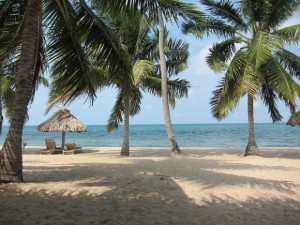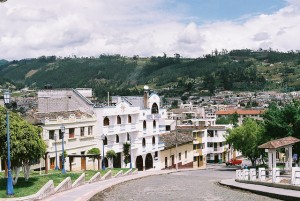Everything you need to know that happened in the last 2 months in Costa Rica.
Each day we sift through hundreds of articles in English & Spanish to bring you the very best ones from Central America.
From investment indicators to new infrastructure projects. Adventure stories to politics. It’s all here.
Costa Rica March 2014.
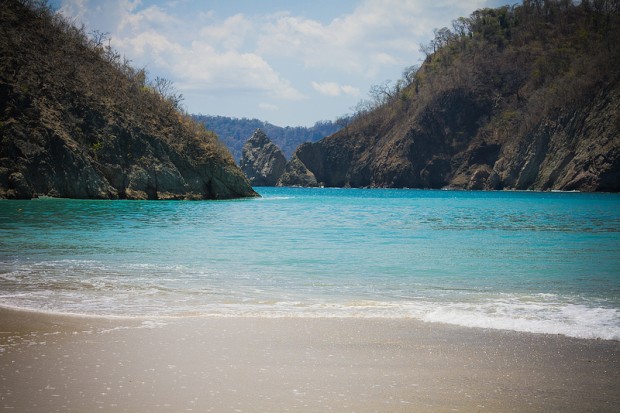
AJ Doudt
Costa Rica Lifestyle
- These Top Three Countries Offer the World’s Best Benefits and Incentives for Retirees (Virtual Strategies) Costa Rica is one of the top three countries who are home to the worlds’ best benefits and incentives for retirees. Luring retiring foreigners with special visas and significant discounts on everything from airfare to health care.
- Playa Guiones, Costa Rica is Top World Travel Destination for Great Surf (Costa Rica Star) Want to live like a surfer?Playa Guiones might just be the world’s best surfing spot. Want to know a bit more, check out the inf at the 2014 Olympus National Surfing Circuit site.

Guy Buchanon
Costa Rica Investment
- Mel Gibson, others not happy as new route planned between Samara beaches (Inside Costa Rica) Mel Gibson doesn’t want a road in Samara Costa Rica to be built. Gibson’s Nicoya home is situated smack-dab in the middle of a planned beach access route. Municipality of Nicoya Plans to Open Route Between Samara Beaches (Costa Rica Star) Gibson and several other land owners are protesting the beach access point. But it appears the municipality is pushing forward with the project.
- New CR International Airport on the Horizon? (Costa Rican Times) Costa Rica has pushed aside once again its plans for a southern airport, instead Orotina is the new spot for a brand new international airport. It sits at sea level, is 30 minutes from San Jose, and is being billed as the perfect spot to build.
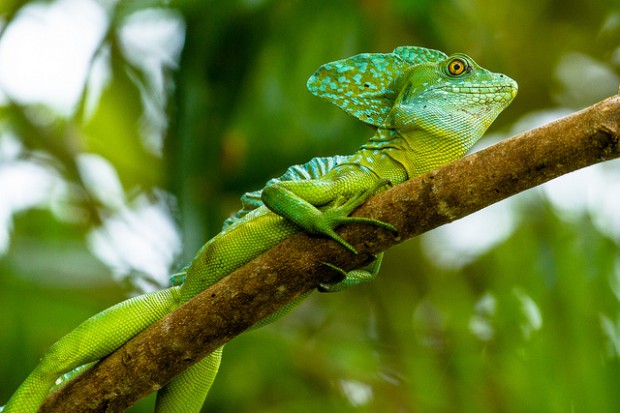
Taraji Blue
Costa Rica Tourism
- Eco-Escape: The Landscapes and Wildlife of Costa Rica (Weather Channel) According to the Weather Channel, the only way to avoid the next big polar freeze is with an eco-escape to Costa Rica.
- Chasing Snakes in Piedras Blancas National Park (The Expert Vagabond) The Central American nation’s natural beauty and richness is one of the reasons many travelers and travel-blogger photographer Matthew Karsten continue to return to Costa Rica.
- Costa Rica: Your family and other animals (Independent UK) Lonely Planet is in love with Costa Rica too. In its ‘Great Escape’, series the well-established traveler’s handbook once again shows travelers how to get the most out of the nation’s wildlife, beaches, and jungles.
- Costa Rica welcomed record number of tourists in 2013 (Fox News Latino) Costa Rica welcomed a record number of tourists in 2013, with just over two million tourists setting foot in the nation.
- Costa Rica Launches Tourism Campaign During the 2014 Sochi Winter Olympics (The Costa Rica News) Even with posting those high numbers, Costa Rica went after an eveng reater U.S. audience, the approximately 1.5 million watching the 2014 Olympic Winter Games in Sochi.
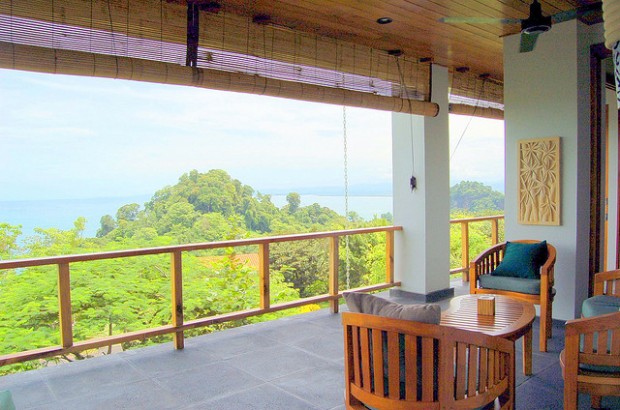
Brad Coy
Costa Rica Real Estate
- BUDGET Analysits of Panama, Costa Rica, & Ecuador to date! (Lyman’s Journey) An interesting comparison of cost of living report by blogger Tricia Lyman (who made the decision to sell everything and go country shopping) shows that a comfortable expat life in Costa Rica can be cheaper than in Ecuador, Mexico, Panama, and even Nicaragua -as long as you don’t live in Tamarindo Beach. Find out why here (Costa Rica Star).
- Tourism, Wealth and Unemployment: Guanacaste in Costa Rica (Costa Rica Star) Real estate in Guanacaste, Costa Rica is booming. Lots of new commercial and residential construction is underway along with an influx of new faces, which has some experts are wondering if there is another real estate boom taking place on the coast? And why now? Learn more at here (Costa Rica Star) .
- Jaco Beach: Costa Rica’s Real Estate Hotspot (The Costa Rican Times) Those not flocking to Guanacaste are ending up in Jaco beach, another real estate hot spot in Costa Rica. This popular little beach town has a little over two miles of beach front with plenty of world renowned surfing, authentic local culture and a caliente nightlife.
- It’s a Buyer’s Market for Private Islands (New York Times) Island buying in Costa Rica continues to establish itself with affluent buyers, who are seeking out non-traditional (think the Caribbean and St. Barts) warm climates. Here affluent buyers are splurging on land in the emerging areas of Costa Rica’s Southern Zone.

Arturo Sotillo
Costa Rica Economy
- Costa Rica’s Economy Rebounding, Vice President Says (Bloomberg) Bloomberg says Costa Rica’s economy is waking up. Following the global financial crisis of 2008, exports and foreign direct investment are picking up and there is a lower unemployment rate.
- Starbucks steps up search for Latin America’s El Dorado (Seattle Times)Where do you find the best coffee in the world? Starbucks of course and now you can get Starbucks in Costa Rica who is betting Costa Rica, and other coffee-rich Latin American nations, will be a source not only of fine Arabica, but also middle class customers.

MD Verde
Costa Rica Environment
- Costa Rica Aims For Carbon Neutrality With Payments For Ecosystem Services (Ecosystem Marketplace) Costa Rica’s grandiose experiment with payments for ecosystem services has restored millions of hectares of forest. The nation continues to establish a domestic carbon market with plans to link it to international markets in the future; all as part of its plan to become carbon neutral by 2021.
- Environmental Performance Index: Costa Rica (Yale) Is Costa Rica really as green as it says it is? Not according to Yale’s Environmental Performance Index. Costa Rica fell from fifth place to 54th out of 178 other countries in the well regarded environmental index.
Like this country brief? Get it in your inbox weekly for free.
Be sure to catch the weekly country briefs by subscribing via email right here:
Costa Rica has long been a favorite of expats and international travelers. With its beautiful beaches, friendly locals, and perfect weather it has claimed the top spot on lists of best tropical destinations for decades.
But what about newcomer Ecuador?
Rich in culture, and with a wide variety of climates and settings, Costa Rica’s South American neighbor is giving it a run for its money. Speaking of which, the cost of living in Ecuador is another perk that’s causing it to take top billing in many of those lists that Costa Rica once dominated.
Which is the better travel destination or expat haven?
Well, that depends solely on you and your priorities and expectations. To help you make a more educated decision, we’ve aligned the two countries in a side-by-side comparison so you can see how they stack up in several of the most important categories.

Ecuador vs Costa Rica
Use the Infographic on Your Own Site
Round #1 – Lifestyle Hacks
Slight Advantage: Ecuador
One of the most amazing benefits of living in Latin America is the opportunity to outsource a lot of your less desirable tasks. With a wealth of local labor resources that aren’t available in North America, you can hire helpers ranging from gardeners to tutors to drivers to grocery delivery guys.
You can even enlist the full-time services of a maid. (Think cooking, cleaning, grocery shopping, and laundry.) And, in Ecuador, that’ll only run you a mere $10 per day!
The cost in Costa Rica is a little higher, closer to $15 per day, but it can be argued that this is one area where you get what you pay for. With Costa Rica’s heavily customer-oriented service culture, the aid you’ll get there is top-notch.
However, the service in Ecuador is excellent as well so, in terms of value, we have to award this category to them.

Mathew Kebbeckas
Round #2 – Connectivity
Outcome: Ecuador Advances
For a country that excels so well in so many areas, Costa Rica is light years behind the rest in terms of internet speed and availability. Broadband is available in most of the larger cities, but it’s often difficult to find a signal elsewhere.
The country’s connection speed has increased by 43% in the past year. However, at 2.1 megabytes per second, it’s still barely enough to stream a movie in standard definition (and you can forget high def).
Ecuador, on the other hand, is aggressively working to increase its internet coverage. Currently, over 35% of the population is connected, with a goal of access in 50% of households by 2015. In Ecuador there are also free public access centers, called Infocentros, scattered all over the country, even in more remote areas.

Anthony Doudt
Round #3 – Living Options
Winner: Costa Rica for its Tropical Lifestyle
Both Costa Rica and Ecuador, with their varied topography and diverse ecoclimates, offer a wide range of living and travel options. There are mountain towns, beach communities, and bustling cities.
In most of those categories, Ecuador is a worthy competitor. Cities like Cuenca and Loja offer colonial charm plus all the modern conveniences. The Galapagos Islands offer some of the world’s best biodiversity. Ecuador also has major cities, like Quito and Guayaquil, for those who want easy access to services and amenities (arguably better than boring, unattractive San Jose, Costa Rica).
Where Ecuador falls flat is with its tropical lifestyle. In short, beach towns. While it has a handful of established destinations, like Salinas and Montanita, those towns aren’t even in the same ballpark with what Costa Rica has to offer.
Tropical living and ecotourism are exactly what Costa Rica does so well. As a result, it can be a bit overrun with tourists at times and in certain locations. However, with so many options, there are still a number of places off the beaten path where you can find a secluded beach or a remote surfing spot. Costa Rica is the epitome of most expats’ ideal tropical lifestyle.

Wanja Krah
Round #4 – Green Living
Slight Edge: Costa Rica
In keeping with its commitment to the natural environment and its push towards ecotourism, Costa Rica is about as green as they come. Almost ¼ of the country’s total area is parkland. Over 90% of its electricity comes from renewable energy sources, with 95% projected by year end. It’s also well on its way to becoming the world’s first carbon-free economy.
It also feels greener in Costa Rica, with many businesses and communities promoting green initiatives and healthy living. However, Ecuador is certainly taking strides in this direction as well.
It’s the only country in the world where the rights of the natural environment are protected in the nation’s constitution. Ecuador is also home to Yasuni National Park, the most biodiverse place on earth. Although the region is constantly being threatened due to its 800-million barrel oil reserve, the country has undergone tremendous measures to protect it.

Tibo
Round #5 – Cost of Living
Clear Winner: Ecuador
Costa Rica is a top tropical destination for tourists and expats alike. However, it isn’t for its low costs. While still a fraction of what you’d pay for the same goods and services in North America, Costa Rica has one of the highest costs of living in Latin America.
By contrast, Ecuador’s reasonable cost of living is often one of its biggest selling points. There a couple could live simply on a mere $1200 per month. This total even includes rent, which runs around $450 on average.
And, by “simply,” we don’t mean completely free of luxuries like once-per-week maid service and high speed internet. While Ecuador’s cost of living is low, the lifestyle it affords is far from meager.

Sean Hobson
Round #6 – Ease of Access
Advantage: Costa Rica
Because of its long-standing status as a top Latin American destination, Costa Rica is serviced by a whopping 13 large airlines. It’s only 2 ½ hours from Miami and air travel from North America is often quite reasonable.
So not only is Costa Rica easy to access, it’s also a great starting point for travel in and around Central America. The only downside is that it has relatively few airports.
Ecuador has two international, Quito and Guayaquil, as well as a number of regional airports. However, most incoming flights have layovers in Miami, Panama City, Bogota, or the Caribbean, resulting in longer (and more expensive) travel.
Once you arrive in either country, public transportation is available to get you to points throughout the country. However, some trips in Ecuador can grow quite long. And Costa Rica isn’t exactly known for the quality of its roads.

CC
Round #7 – Business Climate
Champion – Costa Rica
We’ll go with some cold hard facts on this one. The International Finance Corporation ranks Costa Rica #102 for ease of doing business. Ecuador comes in at #135. In other words, neither has the ideal business climate, but Costa Rica’s is significantly better.
While far from perfect, Costa Rica’s business environment is one of the most stable in Latin America, with numerous incentives like low tariffs and competitive tax rates. Recent legislation has been aimed at attracting foreign investment and supporting the private sector. Processes like obtaining a visa or starting a business are relatively hassle-free, by developing country standards.
Ecuador’s business climate has been somewhat unpredictable in recent years. Its dollarized government is heavily based on petroleum, resulting in the need for the nation to look for ways to improve its trade balance. However, recent strides in economic policy have led to an estimated 5% growth.
Ecuador also offers a number of visa options. However, a number of stipulations (like losing your visa if you’re gone for more than 6 months) make maintaining residency a challenge at times.

My Future
Round #8 – Banking
Lesser Evil: Costa Rica
Due to FATCA and other U.S. tax evasion agreements, both Costa Rica and Ecuador have recently implemented stricter measures that create difficulties for foreigners attempting to bank there. You can no longer open an account with merely a passport, in either location. In fact, the requirements are very much the same for both countries.
Why Costa Rica? Mainly because of Ecuador’s inconsistent regulations and subpar accounting standards. The process of establishing an account can also take a good bit longer there.
One advantage Ecuador has is its use of the U.S. dollar as its official currency. Costa Rica’s colon, while it generally follows the dollar, is thinly traded and could present a problem in the event of a worldwide financial crisis.

Patrick Hall
Round #9 – Investment Opportunities
Winner: Ecuador
Costa Rica’s economy is one of the safest in Latin America, and its policies encourage foreign investment. However, though it excels in stability, it lags behind in opportunity.
Ecuador offers a wealth of real estate and business opportunities at a lower cost and, consequently, with a larger growth potential. The country is investing heavily in infrastructure, which generally results in increased property values. Infrastructure improvements are the #1 catalyst for real estate appreciation, as we discuss extensively in Pay Dirt, our latest ebook.
Tourism investments are also a great option in Ecuador. For its incredible number of natural attractions, Ecuador has a relatively weak tourist infrastructure. There’s a lot of potential for savvy entrepreneurs to profit in this arena as Ecuador continues to gain popularity among expats and international travelers.

Yannis
Round #10 – Health Care
Slight Edge: Costa Rica
This was a close one. Both countries offer excellent health care with skilled medical professionals and modern facilities, particularly in the larger cities. Costs are often as low as ¼ of the price for the same service in North America. Health insurance is also widely available and extremely affordable.
English is widely spoken among doctors in both countries, and many physicians even trained in the U.S. Hospitals are clean and equipped with the latest technological innovations.
While the care provided is great in both countries, the quality of Costa Rica’s health care system is ranked 36th in the world, ahead of the U.S. at 37th. It’s also physically closer to the United States, which could come in handy in the event that medical evacuation or frequent medical travel were necessary.

Mathew Johnson
Round #11 – Consumer Goods
Winner: Neither
Both Ecuador and Costa Rica have a few strikes against them when it comes to the availability and affordability of consumer products. Costa Rica taxes consumer goods heavily (its Value Added Tax is 14%), so as a result less of them are imported.
This can make it particularly hard to find the things you’re after. And if you do locate a hard-to-find item, you’re very likely to pay out the wazoo for it.
At 12%, Ecuador’s VAT is only slightly lower than that of Costa Rica. However taxes on imported goods have been steadily increasing. As a result, many Ecuadorians are actually going outside of the country to buy things like electronics.

Andrew Hall
Round #12 – Foreign Land Ownership
Our Pick: Ecuador
While both countries’ laws protect foreigners who own property, Ecuador’s are much more liberal. Property rights are guaranteed by the constitution, and they apply equally to foreigners and Ecuadorians alike.
What’s more, Ecuador places no restrictions whatsoever on foreigners who wish to purchase land. And there’s an abundance to choose from, often at rock bottom prices.
Compare this with Costa Rica who do not allow foreign residents to purchase land considered restricted or concession areas (which includes 95% of all beachfront property) until they’ve lived in the country for at least 5 years. However, many circumvent this limitation by buying property in the name of a Costa Rican corporation in which they have 49% ownership.
Due diligence is an absolute must before buying land in either country. We recommend the services of a qualified attorney, with experience in land transactions, who can thoroughly research the title and ownership rights.
Costa Rica vs. Ecuador – Who’s the Grand Champion?
Were you keeping score? We weren’t. That’s because it’s so difficult to say for certain exactly which destination is right for an individual.
Our best advice? Come see for yourself.
Is Costa Rica, with its tropical lifestyle and established expat communities, your idea of a dream destination? Or do you prefer to invest in up-and-coming Ecuador, where there’s excellent investment potential and so much left to discover?
There’s only one way to find out.
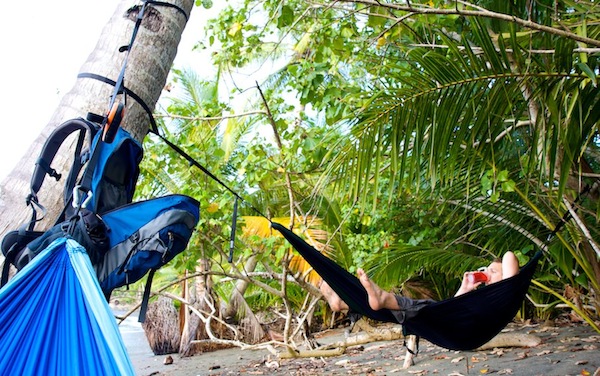
Burica Panama Coastline
Burica, Panama, is one of the country’s best kept real estate secrets. But you needn’t take our word for it. One visit to this remote paradise is enough to make any traveler or would-be expat feel like a pioneering explorer.
It’s as pristinely beautiful as it is mysterious and secluded. And both nature and adventure abound in Burica.
However, before you categorize it as a place meant only for those who want to live out their childhood Swiss Family Robinson dreams, there’s a lot more to this place than just its raw, undisturbed natural beauty.
Despite its remote feel, Burica is surprisingly close to civilization. And not just any old town either. It’s less than a 2 hour drive from David, Panama’s second largest metropolis.
And the wheels are currently turning on several large-scale infrastructure and private development projects that have Burica, Panama, primed for a tremendous boom and accompanying increase in property value.
However, for now, it’s still relatively off the radar of most buyers. That’s why we think Burica is one of Panama’s last remaining secret investment opportunities.
But, for those hoping to score a killer bargain on a property in a place with exploding investment potential, we recommend you act fast. The best deals could soon be gone.
Here are a few of the things that make real estate in Burica, Panama, such a great investment.
Accessing Burica, Panama is an adventure in itself.
Nothing says “remote destination” like having to go off-road to get there. Burica is located on Panama’s Pacific coast on a peninsula the country shares with Costa Rica. And up until about three years ago, there wasn’t even a road to get you to the end of the Burica peninsula. The landscape is made up of dense jungles that just don’t lend themselves well to vehicle travel.

Viva Tropical
In fact, the end of the peninsula was once only accessible during low tide, when residents were able to drive directly on the beach. Otherwise, it was a no go. So, here you had this stunning tropical paradise that virtually no one in the world even knew about or could get to. Talk about exclusive!
Well a few years ago, the government finally put in a road that created access to the entire peninsula. It’s still a rough ride, but the views at the end are totally worth it for those who don’t mind being bounced around in a jeep for the last few miles.
The Burica landscape is otherworldly.
What awaits you at the end of the road to the Burica peninsula is a lush tropical paradise situated on a volcanic reef that juts out over 200 meters in some places. This makes for some amazing waves that serve as an impressive view and calming background noise as you relax in your hammock beneath the coconut palms.
During low tide, the underwater reef is exposed, creating a completely different silhouette that literally makes the shore look like a completely different place. It also makes for an amazing moonscape.
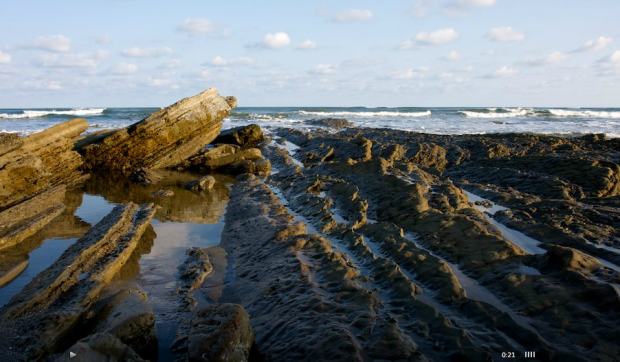
Viva Tropical
There’s also no shortage of wildlife, as Burica is home to a number of exotic species. Among the most prevalent are monkeys. Howler monkeys and capuchins, with their white faces, are all over the place. You can also see the endangered red-backed squirrel monkeys, which are unique to the region and can’t be seen anywhere else.
Burica is an ocean lover’s paradise.
Whatever your choice of aquatic thrill, you can find it in Burica, Panama. If enjoying the coastal breeze while you watch the waves roll in is as adventurous as you get, then you can while your days away in solitude on the beaches of Burica. If that’s merely where your adventure begins, then Burica makes the perfect jumping off point for a long list of aquatic activities.
For starters, it’s full of incredible surf spots that are mostly only known by the locals, who guard these secrets with their life. The great surfing conditions are made possible by the peninsula’s exposure to southern swells, combined with the reef, which drops to depths as low as 300 feet and makes for some amazing waves.
Burica is also home to world-class deep sea fishing. Nearby Islas Ladrones and Isla Montuosa formed the backdrop for many a world record tuna, black marlin, wahoo, and dorado. So far, Burica has one great fishing lodge called Hooked on Panama. And many more are sure to follow as the area develops.

Viva Tropical
Burica, Panama, is home to the first-ever Adventure Colony.
After reading the above, you can probably imagine why we saw such potential in the Burica area when choosing the location for our first Adventure Colony, Playa Burica. Not only did it have the atmosphere and great natural resources that we value, but we also realized what a great investment opportunity it was due to several proposed improvements (like the road we mentioned, which was only a rumor when we first discovered the area).
Our Adventure Colonies are developments for people like us who value wild and beautiful places and want to live in harmony with their natural environment, while also taking advantage of all of the opportunities it offers for adventure. However, even we couldn’t have imagined the success Playa Burica would have.
We’ve sold lots to retired doctors from the midwest U.S., young entrepreneurs from Poland and the U.K., restaurant owners from the Caribbean, and many more individuals who now make up a diverse population that shares our vision and is committed to our dream of maintaining the pristine natural beauty of Burica, Panama.
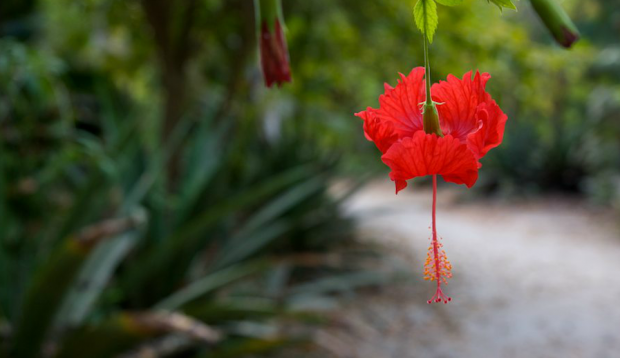
Viva Tropical
There’s never been a better time to invest in Burica, Panama, real estate.
Over our years of experience in the Central American real estate market, we’ve identified the various stages every area goes through on its way to becoming an established expat community. We’ve also pinpointed the exact step in that process where maximum return on investment is achieved.
In Burica, Panama, it’s about to happen.
Burica is currently in market stage 2 of our development model. Pretty much the only people who’ve been buying land there are pioneers like us who’ve been able to purchase large tracts of land at rock bottom prices based solely on its agricultural use to the locals who owned it.
It required a lot of work and due diligence, but the end result is that we’re now able to offer the land in manageable plots to end users who otherwise wouldn’t have been able to enter such a market on their own.
Well, when large land investors and pioneering developers start buying up land in an area, people start to talk. Interest is generated in the area and even more investors start to show up and begin developing the area.
That’s already happening around Playa Burica. Our scouts tell us that two large pieces of property have been purchased at prices that quite honestly shocked us. This is good news for Playa Burica owners and buyers.
Not only are their property values automatically going to increase, but those nearby developments will have to include more and better amenities in order to be financially feasible in this market. So, Playa Burica owners will also benefit from the businesses and services being offered in the surrounding areas.
That’s why it’s important to act fast if you’re considering investing in the Burica, Panama area. It’s too late to be the first on the scene. But it isn’t too late to profit from the improvements that are coming.
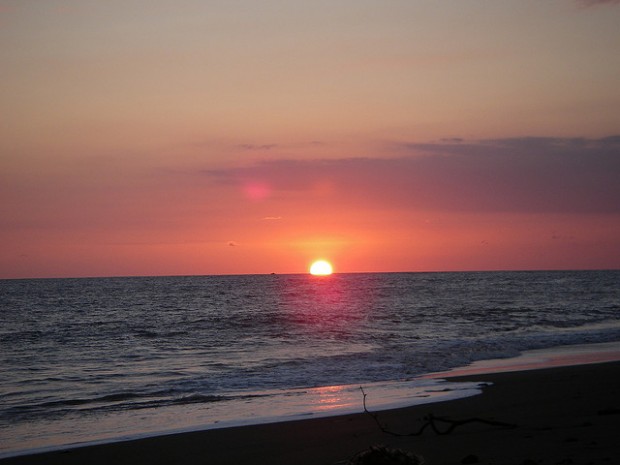
Thomas Richman
Two ongoing projects that will have a major impact on Playa Burica
We’ve already seen the effects that the new road has had on property values in Burica. It’s part of the reason we saw such great potential in the area. Well, it doesn’t stop there. Panama’s government is currently in the process of completing two huge infrastructure projects that will have an even bigger impact on the area.
New Access Via Air
The first is the airport in nearby David. The city’s Enrique Malek International Airport is undergoing a massive expansion and renovation, which will ultimately open its runways to flights from the U.S. and many other nations for the first time ever. That means that people from all over the world will soon have access to Playa Burica via a world-class airport that’s a mere two hour drive away. For now, that is.
Improved Ground Transportation
Why’s that? You guessed it. Construction has just begun on a new 4-lane road from Paso Canoas (at the Costa Rican border) to Puerto Armuelles, the last stop before you begin the trek across the Burica Peninsula. Not only is that good news in terms of access, it’s also a good indication that the government plans to continue to invest in Puerto Armuelles.
And, while the city itself isn’t the type of place that caters to people who enjoy the Adventure Colony lifestyle, it’s the closest place for those in Burica to stock up on supplies. So any growth in Puerto Armuelles is a tremendous benefit to Playa Burica owners and residents.
Bonus offer for Viva Tropical readers!
We realize that, as much as we love Playa Burica, it isn’t for everyone. Namely those who need to be within walking distance to shopping malls and movie theaters. But if you love the idea of getting back to nature on your own private piece of tropical paradise, just a short drive from those other conveniences, then Playa Burica could be right for you.
If so, you should check out our free Adventure Colony book, which explains a little bit more about the concept and what it means to live the Adventure Colony lifestyle, something that’s only available in places like Burica, Panama. The book also contains over $20,000 in exclusive real estate discounts, so download it today!
Map of Burica
Burica Fast Facts
- Population: About 1,360 (Numbers are hard to nail down, but this is a good guestimate)
- Typical temperature: Low 90s
- Nearest airport with U.S. flights: Tocumen Airport. Domestic flights to Panama City, Panama and international flights to Costa Rica depart from Enrique Malek International Airport in David
- Nearest U.S. consulate: Panama City

Saroy
There are a few things you should consider when planning a trip to explore the beautiful Belize beaches on your next vacation.
With almost 240 miles of coastline and hundreds of offshore islands and cayes, you might expect the nation to be home to dozens of the world’s most pristine sandy beaches. Well, that’s not exactly the case.
While there are a number of gorgeous stretches of coastline, among which we’re going to share with you some of our favorites, much of Belize’s coast is occupied by mangrove forests.
These important eco-systems house many species of birds, fish, reptiles, amphibians, and even mammals. They also protect the shores from erosion and damage from hurricanes.
However, they don’t necessarily provide the best conditions for swimming or sunbathing. As a result it’s important to thoroughly research any areas you plan to visit to make sure that each offers the types of activities and atmosphere you’re seeking.
Whether you’re looking to spend your days relaxing in the sand, enjoying some of the world’s best scuba diving in Belize, or soaking up the local culture, Belize has a beach that’s sure to suit your tastes.

Side 78
1. Ambergris Caye: Best for Aquatic Adventures
Ambergris Caye is a 36-mile long island off the northernmost coast of Belize. In fact, it’s believed that it was once part of the Yucatan Peninsula before the Mayans dug a narrow channel to separate it from Mexico.
One of the largest islands, it’s also the country’s most popular tourist destination due to its beautiful scenery, friendly locals, and great access to a number of water sports.
The island has a great tourist infrastructure, with plenty of hotels, bars, restaurants, and shopping. San Pedro Town, the only city on the island, has all the amenities visitors need.
However, despite its popularity, the island still enjoys a relaxed, laid-back feel. This is largely due to the lack of high-rise hotels and other large developments.
Most of the beaches in the tourist areas have been cleared, and some have even had sand brought in to further enhance guests’ enjoyment of the shoreline. However the real star of the show in Ambergris Caye is the wealth of activities that are available just short distance from the coast.
A mere half mile off the coast of the island lies the Belize coral reef system, the second largest in the world. In just a few minutes you can access dive sights like Mexico Rocks and the world-famous Great Blue Hole.
For those who don’t dive, you can also snorkel in 3 feet of water with brightly-colored parrot fish in spots like Shark Ray Alley and the Hol Chan Reserve.
Other popular aquatic activities include deep sea fishing and sailing the cayes. The shore is dotted with piers where you can rent a boat for diving, fishing, or exploring. Diving schools and equipment rentals are also widely available.

Unquencahble Fire
2. Caye Caulker: Best Laid-Back Atmosphere
Just a short distance from Ambergris Caye is Caye Caulker, one of the most easy-going of all the Belize beaches. It also has a number of cleared sections of beach, as well as an area called the Split on the southern tip of the island which is one of the area’s best swimming spots.
The island’s motto is “Go Slow”, and this sentiment is echoed throughout the attitudes of the locals, as well as their methods of transportation.
Cars aren’t allowed on the island, with the exception of a few delivery trucks, so folks get around via golf carts, one-speed bikes, and their own two–usually bare–feet.
Much like the disposition of its residents, the island itself is also fairly unassuming. Businesses are locally owned. Tourist accommodations are small-scale and affordable. The island also remains true to its distinct cultural flavor, without seeming too overly touristy.
Much smaller (only four miles long) than nearby Ambergris Caye, Caye Caulker also enjoys the same close proximity to the Belize Barrier Reef, just a mile away. As a result, it’s also a popular destination for those interested in diving, sailing, and fishing.
Among its other offerings are manatee tours. You can swim alongside these friendly sea cows or just watch as they swim right up to the edge of your boat.
Caye Caulker also enjoys a strong eastward wind throughout most of the year, making it a great place for wind surfing.
Land loving adventurers can explore the jungles and mangrove forests, which are home to over 190 species of birds. Several areas of the island are designated as protected reserves.

Walter Rodriguez
3. Placencia: Best of the Mainland Belize Beaches
If you’re still looking for that pristine stretch of sandy coastline that goes on for miles, you’ll find it in Placencia. In fact, there are 12 miles of it.
The beaches here are wide and welcoming, with fantastic views of the nearby cayes. Of all the Belize beaches, it’s undeniably one of the most postcard-worthy.
But just because it’s on the mainland, that doesn’t mean it lags behind its island neighbors in the adventure category. Placencia lies only a short boat ride from the Belize barrier reef so, like several on our list, it also offers some amazing diving and snorkeling opportunities.
It’s also a good place for fly fishing and trolling, as well as spotting the area’s famous whale sharks. However, in Placencia, the story doesn’t end with the aquatic adventures.
Just inland from Placencia lies the majestic Maya Mountains, which are packed with culture, history, rushing rivers, and cascading waterfalls. These attractions are so close, you can even experience the thrill of the beach and the mountains in the same day.
Placencia is also a cultural and culinary hub. The abundance of fresh seafood lends itself to a wide variety of local ethnic preparations, as well as international cuisines. There’s also a Lobsterfest each year in June. The Placencia Sidewalk Arts and Music Festival in February is another popular event.
Placencia also boasts a vibrant nightlife, with many local bars and nightclubs where patrons can dance to local rhythms ’til the wee hours of the morning.
However, due to its beautiful beaches, festivals, and abundance of tourist attractions, Placencia has a tendency to become a bit crowded.

Joshua Skaroff
4. Hopkins: Best for Authentic Culture
Hopkins is the least known of all the Belize beaches on our list. As a result, it’s a great option for those who hope to avoid the crowds.
It’s also jam-packed with culture, as it’s considered by some to be the cultural center of Belize’s Garifuna population, a people of African, Carib, and Arawak descent. The town hosts Hopkins Day, as well as Garifuna Independence Day, with drum ceremonies and other festivities.
Though it’s gaining popularity, Hopkins is home to only about 1,500 residents, most of whom make a living by farming or fishing. Due to its growth, more and more are finding work in the tourism industry.
The locals are welcoming to visitors, and the area was even recently voted “The Friendliest Village in Belize” by Belize First Magazine.
The town’s shoreline boasts a long stretch of sand that’s perfect for walking or jogging. While tourist attractions are still few, there are a number of restaurants, gift shops, and small bars. Hopkins is also a short 20 minute boat ride from the reef, making it likely to continue to grow in popularity as an up-and-coming dive destination.
Due to their fishing background, the Garifuna people are excellent navigators and tour guides. They can also lead you to some of the area’s best fishing. Some also offer lessons on how to play the Garifuna Drums, a unique instrument of African and Amerindian design played to authentic Caribbean beats.
Hopkins also offers a number of inland attractions to explore, such as Mayan temples, caves, waterfalls, and a dense rainforest. Another site unique to Hopkins is the nearby Cockscomb Basin, a jaguar preserve that offers hiking, camping, and jaguar sightings among fantastic mountain and rainforest views.
Which Beach is Right For You?
Whether your ideal vacation involves long walks on white stretches of sand, world-class fishing and diving, or even both you’re sure to find what you’re looking for somewhere on these beautiful Belize beaches.
You can choose a long span of beach on the mainland, an island getaway, or–better yet–a combination of the two. Just pack your laid-back attitude and your casual attire (shoes optional) and head on down.
Map of Best Beaches in Belize
Belize Fast Facts
- Population: About 324,000
- Typical temperature: 84 degrees
- Nearest airport with U.S. flights: Belize City, Belize
- Nearest U.S. Consulate: Belmopan, Cayo, Belize
Everything you need to know that happened in the last 2 months in Nicaragua.
Each day we sift through hundreds of articles in English & Spanish to bring you the very best ones from Central America.
From investment indicators to new infrastructure projects. Adventure stories to politics. It’s all here.
Nicaragua March 2014.

Martapiqs
Nicaragua Lifestyle
- Expats No Longer Consider Nicaragua to be “The Next Costa Rica” (Costa Rica Star) – Not so long ago, in the early 2000’s Costa Rica dropped from the radar of long-term visitors, expats, and retirees.Why? Many expats started looking for a “cheaper place” or “the next Costa Rica,” and turned their eyes toward Nicaragua, the ultra-cheap neighbor to the north.
- Nicaragua’s new constitution becomes law (BBC) – Recent political developments, however, may prompt many expats to erase Nicaragua from their lists. But hold on, these changes to Nicaragua’s constitution only help its leader, Daniel Ortega, run for a third consecutive term.It doesn’t guarantee it, so don’t be too quick to mark Nicaragua off your best place to retire in Central America list, because it still is a bargain. Also See World’s 2 Best Budget Retirement Destinations (Huffpost)
- Live and Work Abroad When You Retire (Kiplinger) – Nicaragua might be the last place you thought to start your ‘encore’ career overseas. But the truth is, you can throw your hectic lifestyle in the trash can and move your job to Nicaragua.

boris
Nicaragua Investment
- Nicaragua foreign direct investment grows 17 percent in 2013 (CCTV) – Nicaragua’s foreign direct investment grew 17% in 2013, with a total of $1.5 billion in investment.
- Central America upgrades cruise ship, airport facilities in race to attract more tourists (Tico Times) – Nicaragua is aggressively investing in its airports, cruise ship facilities, hotels, and other tourism infrastructure in a race with its Central American neighbors to attract more FDI to its shores.
- (Prensa Latina) – Not known as the top spot to visit in Central America, Nicaragua is hoping to change that with a $50 million investment in its tourism program.

Dane Brian
Nicaragua Tourism
- Falling Under the Spell of Nicaragua’s Corn Islands (Valley News) – Did you know Nicaragua is home to some rather spectacular Caribbean islands?Yep, and it was in 1894 that Nicaragua claimed these fringe islands, but with no roadways linking the capital to the marshy eastern coastline, the Corn Islands remained a world apart. But not now, linked by both water and air, the Corn Islands are ripe for the visiting.
- Why you’ll fall in love with Leon, Nicaragua (Voxxi) – If dipping your toes in blue Caribbean water isn’t enough, then here are 20 good reasons why you should go to Leon, Nicaragua, perhaps Nicaragua’s most famous colonial city.
- Surf’s Always Up in Nicaragua (Nearshore Americas) – Surfing in Nicaragua is rapidly growing. Who is behind the growth? All those pioneering surfers seeking to escape Costa Rica’s increasingly crowded waves.
- David Cordua’s Nicaragua cheat sheet (Houston Chronicle) – When you least expect it, Nicaragua will surprise you. So book your ticket while Nicaragua remains as one of the cheapest places to kick up your feet in a hammock in Central America.

Daniel Fajardo Valenti
Nicaragua Real Estate
- Using Bitcoin, U.S. Banker Makes Home in Nicaragua (El Nuevo Diario, Nicaragua) – Did you know you can buy real estate in Nicaragua with Bitcoin? This guy did it.
- Revision: Nicaragua’s Safety Numbers (Near Shore Americas) – You wouldn’t think this about Nicaragua, but Nicaragua is the second safest country in all of Latin America.
- The World’s 7 Best Budget Destinations (Huffington Post) – Not to mention Nicaragua is home to Granada, which ranks 5th on Huffington Post’s “The World’s 7 Best Budget Destinations” list.

Antanacoins
Nicaragua Economy
- Latin American Countries Should Ditch the Dollar for Bitcoin (Panama Post) – There is speculation that tech savvy young Latin Americans are looking for more ways to be free and independent, and they have it within their power to do so with Bitcoin.
- The Most Important Alliance You’ve Never Heard Of (Carnegie Endowment) – The Pacific Alliance might be one of the most important economic alliances you have never heard of, whose members lead the lists of the most competitive economies in Latin America and those where it’s easiest to do business.Why is this important? Together, they represent 36 percent of the region’s economy, 50 percent of its international trade, and 41 percent of all incoming foreign investment.
- Can Nicaragua’s economy sustain 5% growth? (Confidencial) – Bitcoin and economic alliance aside, despite being among the hemisphere’s poorest countries, public opinion in Nicaragua is consistent with macroeconomic data showing an economy that’s overachieving in many areas. The challenge now lies in how to accelerate economic growth to levels where Nicaragua can start to reduce its poverty rate.

i09
Nicaragua Environment
- Voyage to the Central American Dome, the Forgotten Sea (News Watch National Geographic) – Just off the shores of Nicaragua lies The Forgotten Sea, a nutrient rich area located hundreds of miles off the coast of Nicaragua, Central America. Most of it lies in international waters, outside of national jurisdiction and is known as The Central American Dome. See more about the dome here.
- Scientists are appalled at Nicaragua’s plan to build a massive canal (i09) – Scientists are appalled at Nicaragua’s plan to build a massive canal. However without a doubt the new route would boost the country’s economy and rival the one in Panama — but scientists say it would be an environmental and social catastrophe.
<
Like this country brief? Get it in your inbox weekly for free.
Be sure to catch the weekly country briefs by subscribing via email right here:

Carolin Azuarq
So, how has your IRA been performing over the past few years? If you’re like most, you’ve probably seen minimal growth or even stagnant returns at best. At worst, your retirement account may have lost money and/or been eaten alive by broker fees.
These difficult economic times have not been kind to what was once our most promising option for saving for retirement and reducing our taxable income. Surely, Americans are telling themselves, there must be a better way.
Well, here’s good news. There’s another option. Although it requires a bit more involvement and initiative on your part.
How To Take Control of Your Own Financial Future
Rather than relying on the standard options that have failed them in recent years, many Americans are taking control of their own retirement savings. And with the subpar performance of traditional domestic investments, many are also looking overseas at emerging real estate markets, such as the many opportunities available in Central America.
Investing in offshore real estate is a far cry from the boring Option A, B, or C type investment choices most custodians offer. It’s exciting. It’s outside the box. It gives you complete freedom over your funds and your future. And it offers incredible investment potential that no traditional option could ever rival.
Better yet, it’s all perfectly legal.
Where Traditional IRAs Went Wrong
Individual Retirement Accounts (IRAs) were first introduced in 1974. Through these accounts, retirement funds were handed over to a custodian, a broker who would manage the account and invest the funds in various stocks, bonds, and mutual funds in hopes of increasing the value of the IRA.
The account would grow either tax-deferred or tax-free (depending on the type of IRA) until the individual reached retirement age, at which point he or she could begin taking distributions without facing a penalty.
Having Someone Else Manage Your Funds Isn’t Safe Anymore
While not the most exciting investment concept, there was at least an element of safety involved. The account owner was protected from the responsibility of any decision-making, IRS reporting, or other administrative duties associated with the account, tasks that may be outside the comfort level of many Americans earning a middle class income in a field other than the financial industry.
But where there’s little risk, there’s often little reward. Many of these accounts have suffered at the hands of high fees, limited investment options, flat returns, and custodians who often based their decisions more on what brought in the highest commissions, not what was truly best for their clients.
Meet the Self-Directed IRA
Like you, many Americans have grown tired of seeing their hard-earned money underperform, particularly as retirement looms ever closer. As a result, many are turning to non-traditional methods for saving for retirement. And, thanks to the Self-Directed IRA (which now accounts for roughly 2% of all retirement accounts), they can still do so on a tax-deferred or tax-free basis.
The main difference between a traditional and a self-directed IRA lies within the duties of the custodian. Rather than one who makes the decisions concerning the investment of the funds in the account, the custodian or trustee of a self-directed IRA is merely responsible for holding and distributing the assets, filing the required documents with the IRS, and little else.
The person responsible for the investment decisions in a self-directed IRA account is…well, um…YOU. As the owner of a self-directed IRA, you hold the checkbook. You write the checks. You have the freedom and flexibility to invest your funds as you see fit, with no one looking over your shoulder.
Don’t Let the Self-Directed Option Scare You
To quote Voltaire, with great power comes great responsibility. So, if you’re thinking the self-directed IRA option sounds a bit intimidating, well then you’re quite right. But it really is a manageable risk. I’ll explain more later about how you can minimize the risks associated with controlling your own retirement account, particularly when it comes to the variety of investment options available to you.

Side 78
Freedom: The Biggest Benefit to Self-Directed IRAs
That variety is perhaps an even bigger benefit to the self-directed IRA. With traditional IRAs, investment option are generally limited to stocks, bonds, and mutual funds. Account owners generally aren’t permitted to invest in things like real estate, business enterprises, or–heaven forbid–foreign CD’s or other offshore investments.
Note: I should clarify here that all of the above are perfectly legal and permitted by the IRS. What prevents these investments from being allowed or recommended are the custodians themselves, not any government regulation. Keep reading to understand why that’s the case.
Why Brokers Can’t Offer Non-Traditional Options
With a traditional IRA, your funds are managed by an SEC-licensed investment advisor who has to answer as to what happened if your investments tank. He’s not going to recommend or permit an investment into a non-traditional option where he’s not capable of performing the necessary due diligence, lest he risk losing his livelihood.
That’s not to say non-traditional options are too risky in general. It’s just that the fees your broker is getting from your account aren’t enough to justify him spending the time necessary to research that type of investment, nor would his management approve such a recommendation if he were willing to propose it.
That’s why it’s up to you. As the decision-maker for your account, you can invest in almost anything you desire: mobile homes, storage units, gold bullion, small businesses, land, homes, and more.
There are a few things that aren’t allowed, such as life insurance and collectibles (e.g. stamps, coins, and artwork). But for the most part, your options are virtually unlimited.
Why Real Estate Is a Great Option for Self-Directed IRAs
While many investors are still a bit leery of investing in real estate, due to the devastating demise of the housing market in recent years, the fact remains that real estate is still a great long-term investment.
It’s totally permissible as a holding for IRAs, and it isn’t limited only to domestic properties. It can also include raw land, farm land, commercial properties, property renovations, and rental properties, both in country and abroad.
The reason many investors are turning to the latter option is due to the incredible values available overseas. With lower costs for land and houses, international real estate is an excellent option for those who want to maximize their investment return. Foreign properties also have far fewer restrictions and regulations on everything from zoning issues to paint colors.
Think Long-Term
And, while you can’t live in the home until you reach the appropriate age to begin receiving distributions from your account, many Americans are choosing to purchase rental properties overseas that will one day become their very own retirement homes.
Then, upon reaching retirement age they can take advantage of their own tropical dream home, purchased tax-deferred or even tax-free, where they can also enjoy other benefits like an ideal climate and lower cost of living.
Invest in Something You Can Really Feel a Part Of
If freedom is the biggest benefit of owning a self-directed IRA, then involvement would have to be one of my favorite perks of being an international real estate investor.
When purchasing land overseas, you can buy raw land in some remote location and just sit on it for a few decades hoping it’ll appreciate. But that’s not what I recommend. It’s incredibly difficult as a foreigner, for one thing. For another, it’s just too risky a move.
Partner with a Trusted Professional
By investing in projects headed by skilled developers, you gain several important benefits. For one, you can benefit from their knowledge of the area and the market.
Secondly, you can actually build relationships with both the developers and the locals, as you work together towards a common vision. You also have the ability to influence the community or the development that you’ve invested in and sit back and watch its continued growth and success.
A Different Kind of Proposal Meeting
Take for example, Boca Chica Island, the latest Adventure Colony that my business partner and I have developed. Those who invest with us in this project aren’t just buying a piece of land in a place they’ll never see.
We encourage our prospective buyers to spend a few days experiencing the island–our treat. We want them to get to know us and understand our vision for the project.
We won’t pass around a prospectus. But we can tell you all about the years of research that we’ve poured into analyzing the market and carefully selecting the areas we choose for our developments.
Or you can download our free investment ebook, Pay Dirt, if you want to learn more about our strategy for investing in land in Central America.
Even more importantly, our prospective clients have each of our cell phone numbers. When they call, we answer. How many of your mutual fund managers can say that? When you have control of your IRA, you can choose where you invest and go with people you trust.

Viva Tropical
So How Does All This Work?
There are understandably a few extra steps involved when choosing the self-directed IRA option and using those funds to purchase real estate. Here’s the process in a nutshell.
-
Thoroughly research your options before making any decision. Talk to an accountant, an attorney, and a real estate agent to get a good handle on the whole picture. Make sure you understand the tax ramifications, as well as the rules for the type of IRA you have (e.g. Simple, Roth, Traditional, SEP, etc.). Take into consideration any applicable contribution limits or penalties that may apply.
-
Choose an administrator who has experience handling self-directed IRAs. These won’t be the typical brokerage firms you’re used to hearing about, as there are relatively few who offer this service. Pensco and Equity Trust are two examples. Do your homework. Gauge their experience with IRA-related real estate transactions, and ask for references.
-
Once you’ve selected a custodian, move your account from your current institution to your new self-directed IRA. This will be handled as a roll-over and can take up to a few weeks to process.
-
Solicit the services of a local attorney in the country where you plan to purchase property. Again, we recommend doing thorough research before selecting this individual. Make sure he or she has experience with these types of transactions.
-
Select the property you wish to purchase. This is the fun part! Keep in mind your goals for the property, whether you plan to use it solely for growing your retirement account or whether you one day hope to enjoy it for personal use, and tailor your search accordingly. A qualified local real estate professional can help to simplify this process and work with you and your attorney to keep the hassles to a minimum.
-
Sign a contract for purchase and send it to the custodian for review. Once approved, the custodian can release the funds to the title company who’s handling the transaction.
-
Transfer ownership of the property. The details of this step could vary greatly depending on the details of your particular situation. If purchasing the property entirely with funds from your IRA, the property would be titled in the name of the account. You could also purchase it partially with personal assets and the remainder with funds from the account. However, keep in mind that the ownership percentages would also need to be reflected in the reinvesting of any income as well as the paying of any expenditures such as repairs.
-
Hire a property manager to handle the day-to-day dealings associated with the property, particularly if it’s a rental. Since there are so many restrictions on how involved the account owner himself can be with the property, it’s best to involve a third party as a buffer.
Some Important Considerations for IRA Real Estate Transactions
Just as there are a number of extra steps involved with investing in real estate using a self-directed IRA, there are also a lot of concerns that are unique to these types of transactions.
-
IRAs are individual accounts. As a result, involving your spouse or other family member would require a joint ownership between your individual retirement account and the other entity(ies) of your choice. The good news is you can literally own the property with as many other entities as you want.
-
You can’t always convert an IRA through your current employer into a self-directed IRA. While it’s always possible with a prior employer, check with your HR department to see what your options are at your present company.
-
Traditional mortgages aren’t available for real estate in an IRA. If you don’t have the money to buy the property outright you’ll need to consider a partnership or other joint arrangement. If you must borrow money, it will be a non-recourse loan using the property itself as collateral. These are often difficult to find and have higher interest rates. In addition, any income earned on the debt-financed percentage of the property is subject to Unrelated Business Income Tax (UBIT), though there are perfectly legal techniques (UBIT Blocker Corporations) for mitigating these taxes.
-
You will not be able to deduct the depreciation on real estate in an IRA. While this is typically a write-off for rental properties, the deduction does not apply in this case. However, any rent being collected is also not taxed until distributions begin, so the two may offset.
-
All repairs, taxes, and other fees must be paid from the IRA. This includes everything from property taxes to homeowners’ dues. As a result, you’ll need enough liquid funds in the account to cover any costs. While most IRAs allow a maximum annual contribution (generally $5,000), it might not always be enough to cover any expenses. You also can’t do your own repairs, as your “sweat equity” is considered a contribution.
-
Likewise, all income generated by the property must also remain in the account. This includes rental income, as well as capital gains from the sale of a property. This money, along with any additional contributions, stays there, tax-deferred (or tax-free if it’s a Roth), until you reach retirement age. This is especially beneficial if you anticipate being in a lower tax bracket at retirement.
-
Neither you nor your family can benefit in any way from the property owned by the IRA. For example if you let your daughter live o’in the property or if you get rental income from it directly, you could invalidate the status of your IRA account and become subject to penalties. Likewise you yourself can’t live in the property, lest the entire value be deemed as a distribution. Upon reaching age 59 ½ (or earlier with a 72T election), you may begin taking annual distributions. The property could subsequently be retitled each year to reflect the new ownership percentage.
-
You alone are responsible for maintaining adequate records to document your use of funds and investment returns. Your custodian will complete an account valuation and report the necessary information to the IRS. However, as the one who holds the checkbook, you carry the burden of proving where any money went.
-
Beware of scammers. Many people grow desperate as they approach retirement age and start to panic because they don’t have enough money saved. This makes them more likely to invest in schemes they know little about. This, combined with the fact that there’s little oversight of self-directed IRAs with alternative investments, makes them ideal vehicles for con artists selling bogus investments. Investigate all potential deals carefully, especially if they sound too good to be true.
You’re One Step Closer to Controlling Your Future
As you can see, using a self-directed IRA to purchase real estate abroad requires a great deal more know-how than simply reading over a quarterly account statement from your current custodian. The risks are much greater. But the rewards can be as well.
Just think of the possibilities. You could buy a bungalow in a popular tourist destination that could generate rental income until you’re able to retire to it permanently. Or how about a secluded lot on a private island where you’ll one day build your dream home?
Your options are limited only by your imagination, and the red tape at your brokerage firm. What are you waiting for? Free your IRA from the bondage of traditional thinking, and take financial control of your own future.

Ron Lewis
Located on the Nicoya Peninsula on the country’s Pacific Coast, Nosara, Costa Rica began as an agricultural community with a deforestation problem. The town caught the eye of a developer with a plan to leverage the area’s natural beauty and turn a piece of land into a community.
After over 40 years and several conservation and preservation initiatives (yet no paved roads), Nosara, Costa Rica real estate is highly coveted by investors, would-be expats, and their families.
Nosara is different in many ways than most other beach towns in Latin America, and even Costa Rica. Its natural beauty has made it a popular tropical destination. Yet it maintains a slightly bohemian, small-town feel.
Unlike most coastal towns, its beaches aren’t dotted with luxury high-rise condos and all-inclusive resorts, as much of the area consists of a protected wildlife refuge. However, it still has the amenities you’d expect, such as grocery stores, pharmacies, medical clinics, banks, and a police station. Construction is also constantly ongoing on new housing and retail developments.

Carlos Adampol
The Humble Beginnings of Nosara, Costa Rica Real Estate
For centuries, the area around present-day Nosara was used primarily for grazing cattle. As a result, much of the area had been deforested, greatly diminishing its beauty.
Finally, in the 1970’s, developer Alan Hutchinson flew over the peninsula in a small plane and was taken by the beauty of the Nosara River and the surrounding mountains. He purchased the land from a local and started building what came to be known as “The American Project.”
With labor from the nearby pueblo and supplies that were brought in by boat, the first few houses were constructed at Playa Pelada. The going was slow, with goods being brought in from San Jose or even the U.S. Fresh vegetables came once a week, and the only electricity came from generators that ran a few hours each day.
Sure it’s a great story. But what’s even more important about the way that the Nosara project began is that there was a master plan devised by its developers, something that was unheard of back then and still isn’t even that common today.
As a result of having a plan, Nosara has been able to avoid the pitfalls of amateur development. Along with community effort Nosara has been able to avoid zoning issues that are common in most coastal towns. Its real estate has benefited greatly from these factors making it a perfect place to invest in real estate with a bright future.
In Nosara, you may not drive on a paved road, but you will see million dollar homes. Thanks to a development plan that included thousands of acres you just don’t see beautiful hotels next to chicken coops, and it can’t be underestimated how valuable that makes the land today. And don’t forget the beach. Thanks to the town’s development plan, it’s as pristine as it ever was with no development visible on the coastline. Which is why Travel and Leisure and The New York Times love it and why it is home to people who could afford to live anywhere, but they choose an isolated stretch of coast called Nosara.

FK Nosara
Nosara, Costa Rica Today
The intentional directives of those earliest developers definitely paid off. Today those who have the privilege of owning property in Nosara enjoy one of the greatest lifestyles in all of Costa Rica, if not the entirety of Central America. The Nosara Civil Association, among a number of other groups, have launched initiatives that contribute to the preservation of the town and the enhancement of its residents’ quality of life.
Areas that were cleared for cattle now boast thick, rich forests, thanks to the reforestation component of the master plan. Nosara has the cleanest water table in Costa Rica with no dumping of gray or black water into its streams or beaches (an unfortunately common practice in Costa Rica, where waste management and other basic services are often lacking). Regular trash collection, recycling programs, and sustainability initiatives have also contributed immensely to the area’s cleanup and beautification.
Residents also enjoy an adequate water system, dependable electricity (for Costa Rica), decent roads and bridges, phone and wi-fi service, medical facilities, and a number of other amenities. The bargains scored by those earliest settlers are no longer to be found, but neither are the difficulties those first residents faced.
Nosara is comprised of four main communities, each of which is named after its respective beach: Playa Nosara, Playa Guiones, Playa Pelada, and Playa Ostional. These areas are the most populated, particularly with expats. They, along with the small area of Esparanza de Nosara, are also home to most of the hotels, restaurants, and other tourist attractions.

John and Christina
Nosara Enjoys One of Central America’s Healthiest Lifestyles
A major selling point of Nosara, Costa Rica real estate is the active, healthy lifestyle the area offers. In keeping with its residents’ aim to protect the natural environment, most are equally committed to maximizing their own health and wellness. As a result, Nosara offers a number of options for those who want to enjoy optimum nutrition and fitness.
-
Surfing – Nosara is internationally known for some of the best surfing in Central America. It enjoys consistent waves that allow for all-day enjoyment. There are also breaks that are perfect for every skill level, from beginners to experts. A number of surfing schools in the area offer lessons for beginning surfers of all ages.
-
Yoga – Nosara is one of the most popular places in the country to practice yoga, and there are classes, studios, and teacher certifications available on every corner. Yoga, with its focus on balance and awareness, is also a great complement to surfing and helps to relieve the tension that results from paddling.
-
Other Activities – Those aren’t the only active hobbies that Nosara residents engage in. Others include boxing, hiking, and stand-up paddleboarding. Football (soccer) and tennis are also popular, with access to fields and courts available.
-
Health Food – Healthy and nutritious food options are available throughout Nosara, from raw food cafes to smoothie stands to organic markets and grocers. You can find health drinks, local dairy products, organic produce, bulk nuts and spices, and even artisan foods like coconut and cacao products. Fresh fish is widely available, and there’s even a program that allows for you to sign up online for deliveries of fresh, organic goodies.
-
Green Initiatives – From recycling programs to sustainable building practices, there are a number of efforts in place aimed at keeping Nosara green. Recent programs include campaigns to reduce styrofoam use, beach cleanups, and tree plantings.
-
Nature – There’s much evidence to support the fact that merely being in nature is enough to improve one’s health and wellbeing. And there’s plenty of it to behold in Nosara. From gathering with locals on the beach at sunset to watching turtles nesting in their natural habitat, the area is brimming with wildlife just begging to be observed.
Nosara Is Also an Ideal Place to Raise a Family
Much of the buying pool for properties in today’s Nosara, Costa Rica real estate market consists of young families who are looking for a place to give their children the valuable experience of living abroad. And Nosara is one of the rare places in Central America where you can actually raise a family. As a result, you’ll see families shopping together at the market, eating in a cafe, or just hanging out at the beach, making it an easy place to meet other expat families.
Nosara also feels very North American, with a large number of English speakers (including locals), so it’s a natural choice if you’re looking for a place that’s an easy transition from the North American culture (although there’s still plenty of authentic culture to enjoy in Nosara).
Another huge advantage to raising kids in Nosara is the presence of two bilingual schools, the Del Mar Academy and the HSB Academy. Both have small class sizes and a diverse curriculum, allowing children to learn about the many cultures represented in their classroom. Del Mar Academy also offers a summer program for those who wish to try out the area for a short time.
In addition to their formal education, there are many other opportunities for expat children. Examples include surfing, dancing, boxing, gymnastics, and yoga. Not to mention all the ways your children can connect with nature. Rather than having to go to a zoo or wildlife preserve to see exotic animals, it’s perfectly common to see howler monkeys, lizards, and exotic birds just walking home from the beach.
Another tremendous benefit of Nosara is that it’s safe. Unlike many other beach towns in Costa Rica, it has little drug culture and no real party scene. As a result, it remains free of most shady individuals and maintains a low crime rate. Residents of the small community also do a great job looking out for one another.
What’s important about these characteristics is that they practically guarantee Nosara’s consistent growth as an established town with amenities and services to meet the needs of real families. It isn’t just some latest and greatest destination that’s heavily reliant on its tourism industry and destined to fail once another up-and-coming spot moves into the lead.
Instead it’s a rare find, especially among beach towns. Few other options in the Central American real estate market offer safe, family-friendly beach living, complete with farmers markets, desirable schools, and everything else you need to raise a family.

Jen Watkins
Is Nosara Primed for Another Real Estate Boom?
While it’s been growing steadily in recent years, there are some who suspect the Nosara, Costa Rica real estate market could be about to experience its largest growth spurt since 2006. And a visit to the town these days would quickly confirm those suspicions.
There are many new faces on the street, new homes and businesses going up at record speeds, and many other changes underway. Likely many are beginning to realize the value of living in a small, beach community as opposed to a large, fast-paced city (whether elsewhere in Central America or back in their home countries).
However, there’s no reason to worry that development in the area might get out of control. Due to the federally protected zone being established along the beach, no structures can ever destroy the natural beauty of Nosara’s coastline. This of course is affecting the price of land values as there is a limited supply. Likewise, height restrictions in the areas that are available for development also help to prevent the buildings from dominating the surrounding natural environment.

Philip Reid
Nosara, Costa Rica Market Data and Trends
The lifestyle available in Nosara is without a doubt a critical driver of the real estate market. You don’t see many real estate offices that don’t have vacation rentals as an offered service. This is because vacation renters end up buying lots of real estate, which is a testament to the attractive lifestyle offered in the area.
There are a few things that we’ve seen happening in Nosara’s real estate market over the past few years. For starters, the quality of the construction that buyers are seeking has changed considerably. Today’s buyers aren’t looking for quaint little shacks with thatched roofs, prices for land are far too high to make this idea work. People want high turnkey properties with all the conveniences you would expect in an emerging tourist mecca, a trend that’s also being echoed by the quality of new businesses that are being built or renovated.
Another trend is that property appreciation rates exceeded expectations in 2013, particularly on land prices which were up as much as 50% in some cases. This is a result of dwindling supply, in a 40-year old project there isn’t much that is new and most people at this point don’t want to drive very far to get to town.
As we mentioned previously, one of the easiest themes to notice right now in Nosara is the incredible amount of construction that’s underway. With hardly enough supply to meet the increasing demand (and with sophisticated buyers who know exactly what they want and are willing to wait for it to be built) there is more construction going on in Nosara than ever before. You can’t drive anywhere without seeing something getting built, from houses, to hotels, to tennis courts, the town is changing right before our eyes.
Also, with limited space in the central areas (due in part to the zoning ordinances we referenced), many of these new homes are being built on the outskirts of town or in the surrounding mountains. In those areas, lot sizes are much larger. They offer more privacy and tranquility, as well as a somewhat cooler climate and some killer views. Its expected that the higher prices in town or more space will push buyers into nearby areas.

Chris Goldburg
Why Your Investment Is Safe in Nosara
With so much to love in Nosara, it should be no surprise that it isn’t one of the cheapest places to live. Quite the contrary. It’s one of the pricier options in Costa Rica and in Central America in general. But the desire to live there is really strong and will continue to be for the foreseeable future. Even if you don’t want to live there a vacation rental can deliver a healthy return on investment up to 10% to 20% .
So, while properties in Nosara may not have the emerging upside of those in some lesser-known areas, it’s clear that its real estate market continues to go nowhere but up. If you want proof, you must only look at the expanding schools, new businesses, and infrastructure improvements, such as airport renovations and road pavings (finally!).
These advancements, combined with the slower pace of life and natural harmony, are what make Nosara the best of both worlds. And that trend isn’t one that’s changing any time soon.
Map of Nosara, Costa Rica
Nosara Fast Facts
- Population: About 1,700
- Typical temperature:Mid 80’s
- Nearest airport with U.S. flights: Liberia
- Nearest U.S. consulate: San Jose
Everything you need to know that happened in the last 2 months in Ecuador.
Each day we sift through hundreds of articles in English & Spanish to bring you the very best ones from Central America. From investment indicators to new infrastructure projects. Adventure stories to politics. It’s all here.
Ecuador March 2014.
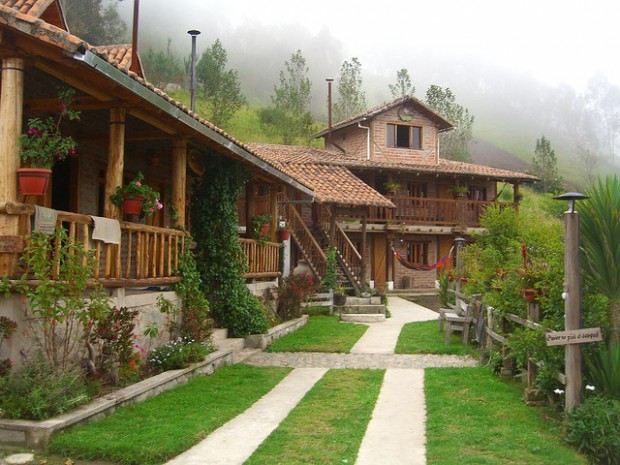
Andrew Hall
Ecuador Lifestyle
Retire to Ecuador (Huffington Post)
Healthcare is pretty darn cheap in Ecuador. You can now get full medical coverage as a retiree for about $70 a month. What a steal!
Beach Communities For Less Than $750 A Month (Financial Adviser)
Want to move there and live on the beach? You can, as Ecuador is one of the best places to retire comfortably in a beach community for less.
The Five Worst Things About Ecuador (Free Beacon)
Nancy and Chuck – Retirement in Ecuador (Watson Travels)
Here’s the thing. Ecuador is not perfect. But if you have an adventurous spirit it’s a great place to live and invest, such as Ecuador-bound bloggers Nancy and Chuck are discovering on their adventurous blogging journey to an expat life in Cuenca, Ecuador.
The World’s Best Place to Retire in 2014 (Daily Reckoning)
And if their experience isn’t enough here are several other good reasons why Ecuador is the world’s best place to retire.

Camino Verde
Ecuador Investment
“Economic Refugees” Find Happiness and Security Abroad (Fool)
From Panama to Ecuador, people known as >”economic refugees” are looking for a better lifestyle, lower cost of living, and fewer regulations than what they experience in the United States. Many expats are now finding economic freedom in Ecuador.
Ecuador, Uruguay and Malta boast best climates in the world (E Turbo Travel News)
Either way, they are enjoying one of the world’s near-perfect climates in Ecuador and relaxing lifestyles to boot.
Ecuador govt highlights US$500mn telecoms investment opportunity
Operating a Business Without a Permanent Address (Entrepreneur Magazine)
Ecuador’s broadband connectivity is top-notch, and with a recent $500 million investment, it will meet or exceed your expectation when setting up your virtual office and becoming a working nomad.
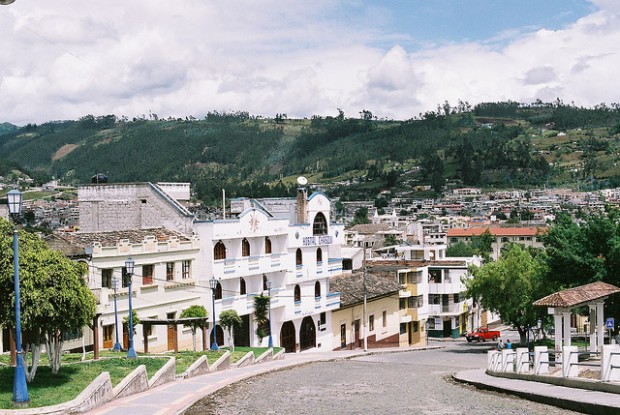
Otavalo Ecuador
Ecuador Real Estate
Foreign buyers help spark property boom in Ecuador’s Cuenca (Financial Times)
It really is no surprise who is fueling Cuenca’s property boom. Foreigners, of course.
Panama, Ecuador and Costa Rica top countries for retirees (E Turbo Travel News)
Then it should be even less of a surprise that Ecuador came up second in many lists of The Best Places to Retire in 2014.
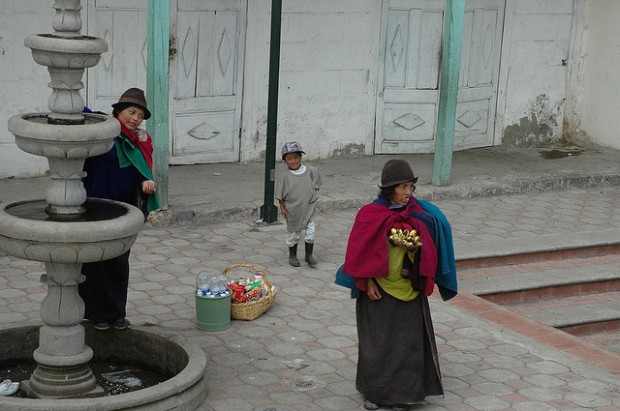
PD Vos
Ecuador Tourism
-
Ecuador eleva la inversión en turismo (Ecuador Increases its Investment in Tourism) (El Tiempo Ecuador)
How deep are Ecuador’s pockets? When it comes to tourism, they seem to be limitless, as the nation is digging deep to attract more tourists in 2014.
-
Cuisine, cathedrals make Quito a South American capital of coo (New York Post) l
Quito really is the capital of cool. And those over at the 2013 Worlds Travel Awards, named it South America’s leading travel destination — it’s clearly time to check the city out.
-
Ecuador: Hiking Andean trails without tourists ( Austin)
Not feeling urban? What about hitting the hidden hiking trails of the Andes instead.
What ever you choose. Ecuador does not disappoint.

EU Development Days
Ecuador Economy
Eucador Banks January-September Net Profit Fell 26 to 1985 Million (Nasdaq)
Ecuador’s Banks Face Tougher Regulations (Wall Street Journal)
Since President Rafael Correa took office, he has put the squeeze on Ecuador’s banking sector by tightening controls on private banks, which have affected both private and public growth and profitability.
Ecuador’s Economy Grew 4.9% in Third Quarter (Wall Street Journal)
Ecuador inflation hits 8-year low in 2013 (Brazil Sun)
Despite all of the banking news, Ecuador’s economy seems to be moving along, so says the Wall Street Journal. Inflation is even at an 8-year low.
Ecuador’s Banks Face Tougher Regulations (Wall Street Journal)
Ecuador’s Economy Grew 4.9% in Third Quarter (Wall Street Journal)
Bloomberg says Ecuador’s economy, South America’s seventh biggest, is growing, but at a slightly slower place than previously estimated, when it posted 4.9% growth in third quarter of 2013.
Ecuador sees 2014 trade deficit falling with new import rules (Reuters)
Ecuador hopes to lower its trade deficit in 2014 through new quality controls for imported products and support for domestic industry, such as manufacturing lead-free bicycles and importing less chocolate.
Ecuador’s Performance Challenges Perceptions About Leftist Latin American Governments (Economonitor)
Seems the nation is taking the path of producing more and importing less. However, Ecuador is not seen as a strict leftist country. Actually, the opposite, as analysts at Economonitor point ou,. Ecuador escapes the bad rap and is home to a prospering business climate.
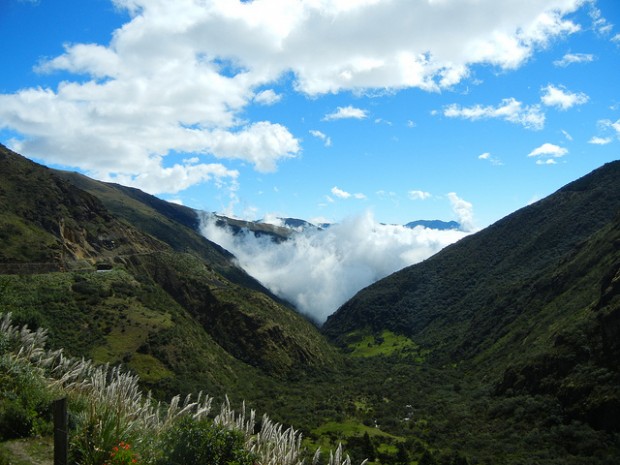
Mulligan Stu
Ecuador Environment
Tungurahua volcano news & eruption updates (Volcano Discovery)
The Tungurahua volcano has erupted, sending an ash plume upwards of 40,000 ft. into the sky. See the before and after pictures of the eruption here.
Russia to invest $1.5bn in Ecuador energy (RT)
Russia has handed Ecuador $1.5 billion for access to its oil reserves. This news comes as a bit of a surprise seeing how the nation is still reeling from past environment issues with Chevron.
Like this country brief? Get it in your inbox weekly for free.
Be sure to catch the weekly country briefs by subscribing via email right here:

Tony Vincelli
There are a lot of reasons you might be considering relocating to Central America. There’s the pleasant climate, the opportunities for adventure, the ability to live at your own pace. Those benefits are all excellent reasons to look to the Latin tropics when thinking about a move abroad.
But what about improving your brain health and cognitive functioning and lowering your risks of developing Alzheimer’s disease? That didn’t make your list? Then maybe you should check out the following stat.
A whopping 24.8 of every 100,000 deaths in the U.S. are due to Alzheimer’s-related causes. Yet the average in Central America is only 2.48. That means that you are 10 times as likely to die from Alzheimer’s disease living in the U.S. than in Central America.
Given that information, you might want to go ahead and add “preventing Alzheimer’s” to the “pro” column on your list of reasons why you should or shouldn’t consider joining the thousands of other U.S. expats who are finding a better, and healthier, life in Central America.
It’s Not a Joke. It’s a Serious Epidemic.
The symptoms of Alzheimer’s disease are issues we once thought of as merely senility, a normal symptom of old age. Many senior citizens even use this diagnosis to justify their own actions when they misplace their false teeth/hearing aid/bifocals or when they forget a grandchild’s name and instead call them by the name of another relative/neighbor/pet.
However, these symptoms are what we now know as the condition commonly referred to as dementia. While not a disease, in and of itself, dementia instead refers to a group of symptoms that include memory loss and difficulties with language, attention, problem solving, spatial skills, and organization (among other areas).
Much like a fever, dementia is an indication of an underlying issue. And in 70-80% of cases it’s caused by Alzheimer’s Disease, an irreversible degenerative brain disease that’s currently the 6th leading cause of death in the U.S.
Wait, It Gets Worse.
Not only are dementia and Alzheimer’s very real problems. But they’re significantly more prevalent in the U.S. In fact, it ranks 3rd IN THE WORLD for deaths as a result of Alzheimer’s and other diseases that cause dementia.
Between 2000 and 2010, U.S. Alzheimer’s deaths have increased by a whopping 68%, while other top killers like breast and prostate cancer, heart disease, and stroke have decreased by 2, 8, 16, and 23% respectively.
Yeah, I know what you’re thinking. Since the risk of Alzheimer’s increases with age (it doubles every 5 years after age 65, reaching 50% likelihood after age 85), then won’t there naturally be more cases as people live longer?
While that’s a valid argument, and certainly one that accounts for a slight increase in the instances of Alzheimer’s, the numbers are extremely disproportionate. During the same decade when the disease increased to claim 68% more lives, the U.S. life span increased by less than 2 years (from 77 to 78.7).

Andrew Morrell
So Who’s Getting It Right?
Although U.S. residents are leading the world (in a bad way) when it comes to Alzheimer’s deaths, their south-of-the-border neighbors are faring quite well in this same area. While the U.S. ranked 3rd (Canada came in 16th, by the way), the Latin American countries of Mexico (120th), Belize (166th), Costa Rica (40th), El Salvador (169th), Guatemala (161st), Honduras (168th), Nicaragua (162nd), and Panama (117th) all did much better.
Let’s address life spans again, since it does in part account for a small portion of the additional Alzheimer diagnoses. But again, there’s hardly much difference. Costa Rica ties the U.S. for 33rd place in the world for its long lifespan (79 currently). That partially explains its somewhat higher Alzheimer’s rate than its Central American counterparts.
But it doesn’t help justify the much lower number of occurrences in places like Mexico and Panama, whose life expectancies are 75 and 77, respectively.
It isn’t the quality of the care provided, as only Costa Rica comes close to the U.S. in the WHO’s ranking of the world’s healthcare systems. And considering the U.S. is the 4th best educated nation in the world (Canada is #1), according to data from the Organization for Economic Cooperation and Development, education isn’t to blame either.
So, if those factors aren’t the culprits behind the U.S.’s growing Alzheimer’s epidemic, then there’s got to be another explanation. The gravitational pull of the moon, a genetic predisposition, or maybe exposure to an abundance of Walmart stores. No?
Proof That It Isn’t In Their Genes
Although the theory that susceptibility to Alzheimer’s is merely in the genetic makeup of U.S. residents doesn’t seem all that farfetched, recent findings have shown the complete opposite of that fact to be true. Let me explain.
As mentioned, the countries of Central America (and Mexico) have relatively low rates of death due to Alzheimer’s, when compared to the U.S. Now, what happens when you transplant those Latinos into the U.S. and let them live like much of the rest of the North American culture?
THEY BECOME 1.5 TIMES AS LIKELY TO DEVELOP ALZHEIMER’S DISEASE.
That’s right.
Latinos make up roughly 17% of the U.S. population and, even though they have no genetic predisposition to developing Alzheimer’s, they are being affected by alarming rates. Rates that are projected to increase 600-fold by 2050.
Doctors chalk most of this phenomenon up to an also high occurrence of chronic illnesses in Latinos, including obesity, cardiovascular disease, hypertension, diabetes, and stroke. More diseases that occur in a relatively low percentage to these same individuals in their countries of origin!

G. Vermin
The North American Lifestyle Is Killing Them!
All other factors unchanged, the only other explanation is that these immigrants have succumbed to a North American lifestyle that creates the ideal climate for brain degeneration. And we aren’t merely suggesting they are all turning into couch potatoes who sit around and east fast food all day.
While that is an unhealthy way to live, recent studies suggest that there are a lot more factors leading to the high occurrence of U.S. Alzheimer’s cases than just diet and exercise (although those are certainly major ones).
The study, Environmental Threats to Healthy Aging published by Greater Boston Physicians for Social Responsibility and the Science and Environmental Health Network, identified several environmental factors that alter human cells and cause a number of health problems.
They contribute to what’s called the “Western disease cluster” and includes obesity, diabetes, cardiovascular disease, and metabolic syndrome–all which greatly increase the risk of Alzheimer’s disease. These diseases, they claim, are being driven by changes made in the past century to the U.S. food supply, exposure to toxic chemicals, and an increasingly sedentary way of life.
Here are some of the leading causes they identified.
-
Lead – Lead exposure has recently been linked to cognitive impairment, as much as 15 years’ worth of aging in those with the highest amount of exposure.
-
Air pollution – In addition to the brain, air pollution can also damage the nose, lungs, heart, and blood vessels. The resulting inflammation and cellular damage have been linked to Alzheimer’s and Parkinson’s diseases.
-
Pesticides – Exposure to pesticides has been proven to impair memory and attention spans, and those with a high level of occupational exposure more than double their risk of developing Alzheimer’s.
-
Dietary risk (and protective) factors – Diet and nutrition can both increase and decrease the risk of disease. Diets high in saturated fat, for example, have been shown to increase the risk of dementia. However, diets high in omega-3 fatty acids and those that resemble a Mediterranean diet (consisting of fresh produce, legumes, whole grains, fish, nuts, and olive oil) have been linked to a reduction in the risk of Alzheimer’s, as well as other diseases.
-
Physical activity – Getting some exercise as little as two days a week, during midlife, can lead to a reduction of 50% or more in the risk of developing dementia or Alzheimer’s later in life.
Are You About Ready for Some Good News?
If poor eating habits, an inactive lifestyle, and exposure to harmful gases and chemicals can INCREASE your chances of developing Alzheimer’s, then is it too much of a stretch to think that the opposite type of lifestyle can actually DECREASE those odds?
It isn’t. And it can!
Just look at the suggestions that same study gave to both communities and individuals to help them lower their risks of developing Alzheimer’s.
-
Sustainable, diversified, local alternatives to industrial farming
-
Reformed chemical policies to prevent pollution
-
Accessible health care that focuses on disease prevention
-
Energy policies focusing on reduced emissions and conservation
-
Eating healthy and nutritious foods (high in vegetables, fruits, fish, and nuts–low in meat, sugar, fat, and processed foods)
-
Staying physically and mentally active
-
Being socially engaged with friends, family, and community
Sounds doable, right? It’s a list full of positive strides you hear political candidates promising and just generally things you know you should be doing.
So why aren’t you doing them?

Rita Willaert
Wait, It Gets Better.
While it’s possible to take some difficult baby steps towards better brain health living in North America, it’s flat out simple in Central America. That’s because there it isn’t just about phoning it in and finding ways to artificially incorporate these practices into your life.
It’s a completely different way of life.
It isn’t squeezing in a quick high-intensity workout at the gym in the morning and then a day full of sitting around. It’s getting exercise that’s naturally built into your daily life as you tend your own organic garden on a hillside, walk into town or along the seashore, or engage in sports or other activities you enjoy.
It isn’t taking a processed pizza crust and piling it high with “healthy” toppings or buying some obscure vegetable and experimenting with ways to make it borderline edible. It’s eating healthy the right way by going to the local farmer’s market and buying fresh, locally-grown fruits and vegetables that taste phenomenal just the way they are.
It isn’t doing crossword puzzles and brain teasers to help keep your mind active. It’s stimulating all areas of your brain by being exposed to new people and ideas, learning a new language, and trying new things. (In fact, one study revealed that bilingual patients delayed their dementia risk by almost 5 years.)
And Better…
Other factors linked to a reduced risk for Alzheimer’s include low stress levels, a sense of purpose, strong ties to family and community, spirituality, and plenty of sleep. What better place to find these qualities than in Latin America where life moves at a slower pace, where friends are like family, and where family is everything.
It’s a place whose culture is heavily steeped in religion and tradition and whose people enjoy a quality of life that is virtually unmatched elsewhere.
And, because we so strongly believe in this healthy life-altering lifestyle, we’ve begun building a series of Adventure Colonies that offer an ideal setting for residents who wish to align their lives with these principles. You can learn more by downloading our free ebook and reading about the Adventure Colony lifestyle.
Whether you’re looking to make a change for the sake of your brain, or just for your heart and soul, it could be the smartest move you’ll ever make.
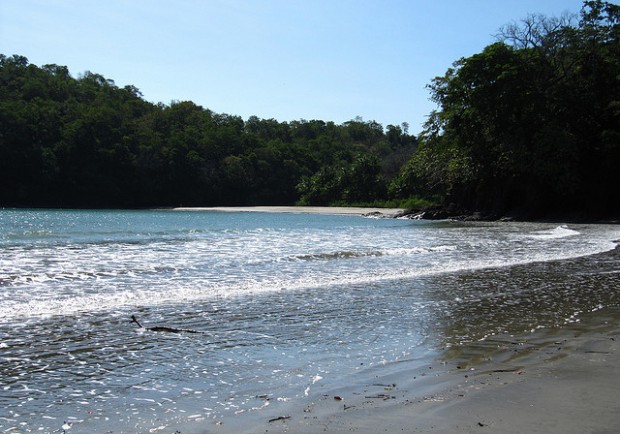
BTimes
You’ve probably heard of beautiful Bocas del Toro, a group of islands off Panama’s Caribbean coast that, in recent decades, has become one of the country’s most popular tourist destinations.
But there’s also another emerging destination just a few hours away on Panama’s Pacific side that we think is, in many ways, superior (or at least on par) with its Caribbean counterpart.
That place is Boca Chica, Panama.
Because of their coastal locales, the two share many common attractions. However, each has specific areas where it excels beyond its competitor.
Both are fantastic places to visit or live, but–to help you decide if one of these destinations could be right for your next vacation or even your permanent home overseas–take a look at how the two stack up in several important categories.
Round #1: Accessibility
Winner: Boca Chica
The best way to reach Bocas del Toro is by plane, which is a 40 minute flight from Panama City or San Jose, Costa Rica. By land, travel is far less simple. Bocas del Toro is on the Caribbean (northern) side of the country, and the Pan American highway generally hugs the Pacific (southern) side. As a result, it takes hours to get from Bocas del Toro to any other decent-sized city, such as Boquete and David.
Boca Chica, however, is on Panama’s Pacific coast a short distance from the town of David, just over half an hour in fact, thanks to a new 4-lane highway. Even in a slow boat, you could get to one of Boca Chica’s closer islands from the airport in David in about 40 minutes or so.
That’s not to say that Boca Chica isn’t remote. Due to the fact that it has less people and tourist attractions, it feels much more secluded than Bocas del Toro once you get there. It’s just the ‘getting there’ part that’s much more advanced.
What’s more, Boca Chica also boasts proximity to a number of other adventures and attractions throughout the Chiriqui province, one of the nation’s biggest up-and-coming areas for tourism. There’s hiking and whitewater rafting at Volcan Baru, the country’s highest peak, coffee plantations and canopy tours in Boquete, and a number of other places to visit nearby.
Round #2: Consumer Goods and Services
Advantage: Boca Chica
Due to the problems with access and proximity to a large city, what’s available to you in Bocas del Toro is mostly limited to whatever is offered or sold locally. There are grocery stores, banks, ATMs, and a number of restaurants and bars. The town also offers basic health care in the form of a few public (and even a handful of private) clinics.
However, most (or, in some cases, all) of these are located in Bocas Town on the main island of Isla Colon. That means that if you’re staying elsewhere you’ll need to take one of the many water taxis, which are available on up into the wee hours of the morning.
If you need something beyond the local options, you have two options. You can drive the 4 hours over the mountain ridge to David where there’s practically every kind of service imaginable: hardware stores, modern hospitals, repair shops, government offices, and a variety of dining and shopping options. Or you can incur the cost (and the wait) associated with having goods shipped.
Boca Chica has roughly the same local options, in the way of small retail establishments. The major difference between the two is that the latter is a mere 40 minutes from David. As a result, it’s reasonable to conceive of driving into town for a world-class steak dinner or towing your boat into the city to a reliable mechanic.

Viva Tropical
Round #3: Investment Potential
Winner: Boca Chica by a Large Margin
Bocas del Toro, while still a great place to invest in property, is already very much on the radar of many travelers and would-be expats. Because it’s a well-known tourist destination with an established expat community, the prices in the area reflect that.
On the other hand, Boca Chica offers all the same gorgeous scenery and opportunities for adventure at prices that still represent a great value. But, most importantly, the Boca Chica area has screamin’ investment potential.
We mentioned that it’s close to David, much closer than Bocas del Toro. Well, factors like location and accessibility play a huge role when it comes to property valuation. As does infrastructure.
And both of those are better in and around Boca Chica, particularly in terms of the easy access to David and its international airport. Even more prophetic is what’s currently going on at said airport: millions of dollars in renovations and expansions that will soon open its runways to international flights from the U.S. (among other countries) for the first time in history.
What will result is more visitors and new residents in Boca Chica, which will in turn lead to the need for new businesses, even better infrastructure, and continually rising home and land prices.

Viva Tropical
Round #4: Atmosphere
Outcome: Boca Chica for Solitude, Bocas del Toro for Socializing
Both Boca Chica and Bocas del Toro have a great vibe. They’re just different in their appeal.
Bocas del Toro is your quintessential Caribbean beach town. It’s fun and funky with many of its buildings and businesses built out over the water on stilts (no high rise condominiums here). It’s charming and quaint, that is until nightfall when things can tend to get a little crazy as Bocas del Toro is known for its partying nightlife. Peace and quiet can be found, but you’ll have to venture outside of town or to one of the smaller islands.
Boca Chica, on the other hand, is quieter and a bit more subtle. Instead of hovering atop the water, its lodges and resorts are tucked away into hillsides or scattered among the many islands of the archipelago. There are good times to be had on Boca Chica evenings as well, but they’re usually in the form of lively happy hours on restaurant patios rather than in thumping discos.

Autoridad de Turismo de Panamá
Round #5: Tourist Infrastructure
Advantage: Bocas del Toro
By comparison, Bocas del Toro is the much more established of the two areas, particularly when it comes to tourist attractions in Bocas del Toro. Populated by locals, as well as an established expat community, it caters to backpackers, families, honeymooners, and more.
Bocas del Toro has plenty of hotels and restaurants, most of which are concentrated in and around Bocas Town. There are also dive shops, deep sea fishing charters, a number of boat cruises and tours, bike and moped rentals, and various land and sea excursions…everything you’d expect to find in a Caribbean beach town.
On the other hand, many of these same operations are just beginning to appear in Boca Chica. You can enjoy most of these same activities there. You just might have a harder time locating a few of them (with the fishing, sailing, and other aquatic adventures being the overwhelming exception, as they’re all abundant in Boca Chica).
As mentioned, Boca Chica is poised for tremendous growth in the coming years. The potential for new tourism offerings is certainly there. It’s also another great investment option for entrepreneurs who want to open a boutique hotel or sport fishing lodge.
Round #6: Surfing
Advantage: Bocas del Toro
Both Boca Chica and Bocas del Toro have beautiful beaches that are perfect for swimming or sunning, including long stretches of secluded beaches where you can find yourself totally alone.
However, if hitting the surf is the excitement you crave, you’re better off in Bocas del Toro.
Some of the best spots include Bluff Beach, which has large enough waves even for advanced surfers; Carenero Point, which has the islands’ longest left break and perfect tubes when the conditions are right; and Isla Batimentos, which is home to the popular Wizard Beach and Red Frog surf spots.
There’s good surfing to be found near Boca Chica, but getting there will require a little longer drive or boat ride than in Bocas del Toro.
Round #7: Snorkeling
Advantage: Bocas del Toro
The same goes for snorkeling. There are a few private beaches in Boca Chica where you can enjoy a day of snorkeling. You can also take a 45 minute boat ride to the waters around the nearby Islas Secas, or a longer 2 to 3 hour trip to Coiba National Park, one of the largest marine parks in the world.
The options in Bocas del Toro are much more prevalent. One of the best places is Bahia de Almirante in Admiral Bay, with its protected coral reefs, clear waters, and few waves. In and around Bocas del Toro you can see reefs, kelp forests, shipwrecks, caves, over two dozen types of coral, and hundreds of species of fish.
Another popular spot is Hospital Point. It’s only five minutes away by boat, making it easily accessible and a great way to get in a little exploring without taking up too much of your day. You can rent equipment for as little as $12 per day and hire one of many locals along the wharf to drop you off and pick you up for around $3.

Chuck Holton
Round #8: Diving
Verdict: Boca Chica Wins
Bocas del Toro has a number of good options for scuba diving, often the same spots you would go for snorkeling as some of the reefs go down as deep as 60 feet. However, the waters around Boca Chica offer some of the world’s best dives, according to National Geographic.
Islas Ladrones, which lies 27 miles due south, is teeming with schools of jack, snapper, and barracuda. There are also smaller species like surgeonfish, parrotfish, triggerfish, angelfish, and more that can be seen year round. You can also spot several species of shark and, at certain times of the year, giant manta rays and humpback whales. Visibility near the island is 30-80 meters.
Slightly farther away, along Isla de Coiba, you can also explore a 330,000-acre reef which contains 60 of the world’s 75+ species of hard and soft coral. In these protected waters you’ll also find mullet, stingray, puffers, moray eels, and gentle sea turtles.
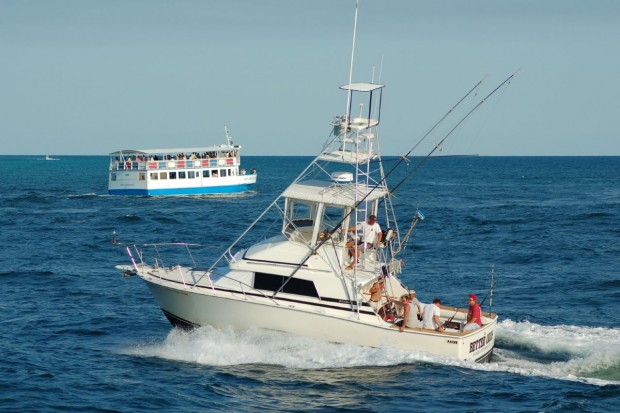
CMC corkle 2005
Round #9: Fishing
Winner: Boca Chica Hands-Down
As you could guess based on the abundance of species represented in Boca Chica, the fishing in its waters is second to none. Fishing lodges make up a big majority of the tourist accommodations in the area, and we’ve lost count of the number of world record catches that were landed in and around Boca Chica.
Much of these whoppers were reeled in near Hannibal Bank, a world-famous fishing hotspot where the ocean floor rises sharply from thousands of feet deep to a mere 120 feet. This underwater cliff is home to the merging of schools of inshore fish with the offshore species who feed on them. Marlin in excess of 1,000 pounds and tuna over 300 pounds have been caught in these waters, as well as snapper, amberjack, and snook.
These and other species can also be caught in Bocas del Toro. The best fishing is a bit more seasonal there and, while still world-class, it isn’t even in the same ballpark as Hannibal Bank.
Round #10: Land Exploration
Verdict: Boca Chica Takes the Round
Being composed at least partially of islands, both Bocas del Toro and Boca Chica have plenty of options for exploring. Each island offers its own varied topography and environment. You can find hundreds of different species of monkeys, reptiles, birds, and plants, many still unidentified.
We’re giving this round to Boca Chica based mainly on the fact that its islands and jungles have a much more otherworldly appeal to them. A number of its islands are completely covered in untouched rainforests, with an abundance of old growth trees so ancient-looking that you would almost bet they pre-date the great flood.
One such is Boca Chica Island, the location of our latest Adventure Colony. To help maintain the island’s prehistoric feel we’ve created Monte Vida Park, a 50-acre crowd funded preserve dedicated to protecting the surrounding rainforests and in turn adding value to property on the island.
Because of Boca Chica’s incredible investment potential, as well as its stunning natural environment, it was a natural choice when we were looking for a spot to establish a place where like-minded people could take advantage of all the area has to offer.

Rainer Wiege
Considering a trip to Central America this summer but concerned about the so-called rainy season? The rainier months of May to October are in many ways the best months to see the country. Here is why.
There Are Still Sunny Days
Traveling during the rainy season in Central America does not mean you miss out on sunny beach time. Mornings and early afternoons are usually sunny and beautiful with showers in the afternoon or evening. The rain can actually be a welcome reprieve from the heat of the sun, cooling everything off. September and October are the rainiest months of the year, but May through August offer plenty of sunny days.
Everything Is Greener
One of the best reasons to travel to Central America is to experience the stunning forests and flowers. During the dry season there is little to no rainfall on the Pacific Coast. Consequently the jungle becomes dry and the land becomes arid making everything dusty and brown. Dust can become a serious problem causing many locals to wear masks when driving down or cycling on the road. The rainy season is locally called “the green season” because it is when the jungle becomes the most lush and beautiful. With afternoon or overnight showers in the green season, the entire landscape comes to life. The habitat flourishes which makes wildlife more abundant and easier
Less Crowds
Possibly the best reason to travel to Central America in the rainy season is because there are so many less tourists. Laying on the beach, hiking up a volcano, swimming in hot springs, and spotting animals in the jungle is much more enjoyable without crowds of people. Peak season runs between December and April, so the rest of the year it’s not uncommon to find your own private stretch of beach.

MD Verde
Less Expensive
Green season also means slow season which means great deals! Hotels, housing rentals, and flights are at significantly discounted prices, often cut in half, during this time which boosts your budget for adventure tours. A trip that you may not be able to afford in the winter may be below your budget in the summer.
Rushing Waterfalls and Rapids
Swimming in waterfalls and white water rafting are big tourist draws in Central America. Pacuare, Costa Rica in particular is a worldwide rafting destination and during the rainy season the higher water levels offer faster, more thrilling rafting. With more rainfall the waterfalls also become more dramatic and rushing.

Mike Beard
Easier to Connect with Locals
If you are considering relocating to Central America, the rainy season is a great time to come visit. It’s often much easier to befriend and gain insight from locals and expats during this time because there are significantly less tourists. Restaurants and cafes are quiet and usually frequented by residents or long-term travelers.
Whale Watching and Turtle Nesting
Humpback whales migrate up the Pacific coast in Costa Rica beginning in August which is an incredible time to take a whale-watching tour. This time of year is also when the leatherback turtles on the Caribbean coast begin to hatch which brings tourists from all over the world to witness the incredible event. You can even volunteer to help the baby turtles make their journey into the ocean.
Prime Surfing
Epic surf put Costa Rica on the map for tourism, and rainy season lends some of the best swells all year. While the Northern Nicoya Peninsula and the South Caribbean coast experience their best surfing conditions between December and March, the Central and Southern Pacific peaks from May until November. With less tourists you will also have less competition for catching world-famous Costa Rican waves. Check out Dominical and Pavones for world-class surfing during the rainy season and little to no crowds.
There are plenty of reasons to come to Central America in the rainy season, but if you really do not want to risk the rain, consider heading to the Caribbean coast which tends to be driest and sunniest in August and September with calm seas for snorkeling. No matter the time of year there is somewhere beautiful to enjoy in Central America.
Did you know that Panama economy is one of the fastest growing in the world? It’s one thing to hear that, but it’s another to see clear and simple evidence.
Here are 8 statistics to help you understand why Panama’s growing economy is an attractive place for investment.















